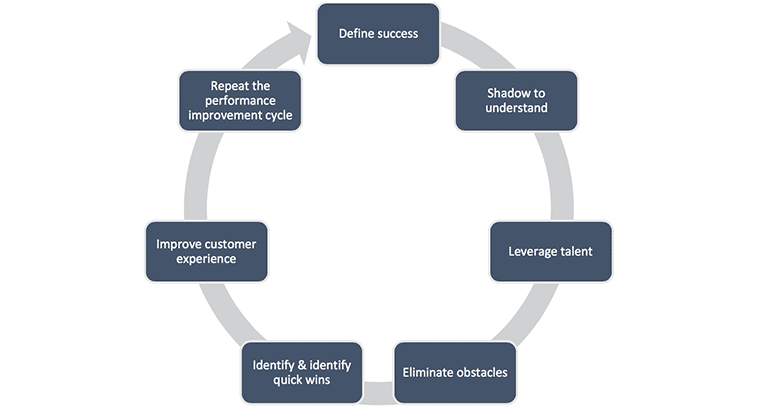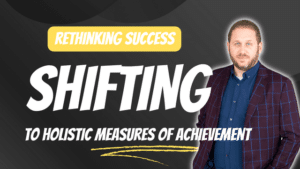The article was originally published on ICMI.com in August 2019.
Chris Hanna
Regardless of industry or geography, most contact centers are experiencing a common challenge – striving to achieve more with less. Unfortunately, despite being asked to do more, there are sometimes fewer resources available. Additional headcount is at a premium or near impossible to get when needed. Finance and IT support for pivotal projects are sometimes tied up in other higher priority initiatives. Deadlines and time constraints can also be tight. All these challenges and strained resources combined are leading to increased levels of burnout and decreased employee engagement in many organizations and industries.
Despite challenges, it is possible to win against seemingly impossible odds. In this article, I will provide you with suggestions to drive performance improvement – achieving more with less. In fact, all the suggestions offered are part of a cycle to drive performance improvement and cost nothing other than time and an investment in your most valuable resource – your people.
First, Define Success
To drive performance improvement, it’s essential to define how success will be measured. Doing so allows everyone to know the purpose and their part in achieving it. Measuring current state performance in comparison to the target gives everyone a better sense of any gaps that need to be closed. Make sure that everyone knows how performance is measured so that they can end each day, knowing if they were successful or not in making progress. Continually remind team members what the target that everyone is trying to achieve. Also, ensure that any metric or target listed on a scorecard is connected to improving the customer experience, or its just wasted effort.
Shadow to Understand
To help improve performance, contact leaders need to have a solid understanding of how work is accomplished. One of the most effective ways to do so is to shadow team members. Sit with team members to see how work is currently being done, mapping the current state. Some team members get nervous when someone is observing them, so be intentional with explaining why you are doing it. When shadowing, make it a point to catch employees doing things right, celebrating the impressive behaviors seen as well, and not just focusing on improvement opportunities. After a series of shadowing efforts, potential recommendations for improvement can start to be established.
Leverage Talent
Often some of the best ideas come directly from those supporting customers. Team members who provide support often know better than anyone else how to improve performance. Too often though in most businesses, the collective talents and insights of support teams are underutilized. Leverage the team by soliciting their feedback and ideas to improve processes, products, or services. This can quickly be done by just asking directly, surveying them, or facilitating Start, Stop, and Continue focus groups. Doing so will also help improve overall engagement as the employees feel that their voices are heard.
Eliminate Obstacles
A principal responsibility of leaders is to get obstacles out of their employees’ way. After shadowing and listening to the feedback of team members, there will be obstacles identified that, once removed, will free up capacity and improve performance. Strive to improve the employee experience by identifying where processes or tools make accomplishing tasks harder than they need to be and fix them. Maintain a continuous improvement mindset and foster that in the culture of the team. Challenge how things are accomplished while looking to reduce workloads, allowing for both improved efficiency and better results, ensuring the highest value-added work remains.
Identify Quick Wins
Driving performance improvement by identifying quick wins that can be easily implemented – seeking low effort, high reward opportunities. Achieving multiple quick wins that can be made in a relatively short time builds momentum. Breaking performance improvements into smaller initiatives also help to stabilize the operations and any change management required. Implementing too large of a change can often be met with confusion or resistance due to the complexity associated with it. The more wins that happen, the greater the momentum generated, leading to creating a culture of continuous improvement.
Improved Customer Experience
All goals related to performance improvement need to improve value for customers. It’s important to note that the term “customer” can take on different meanings, though. For most organizations and teams, the customer is external, whereas, in others, they are internal. As a leader, I believe that my customers are my employees. Improving their experience is the number one goal. By focusing on reducing wasted effort while incrementally improving effectiveness, only value-added work remains that customers and employees care most about.

Repeat the Performance Improvement Cycle
To drive performance improvement, with customer experience (or employee experience), the cycle should never stop. Ongoing continuous improvement and refinement are how leaders, teams, and organizations will increase their performance and overall strategic value. Getting better every day, even by 1%, will yield tremendous results over time. Through following the success formula below, tremendous results can be had. Achieving more with less is possible when it comes to working smarter, not harder, and leveraging the talent of your teams.
For a regular dose of advice, tips, and tricks from Evolving Management, follow us on our company LinkedIn page. You can also follow me or my podcast, The Chris Hanna Show on Twitter, Instagram, and LinkedIn or visit chrishanna.ca for more solutions. Let’s connect.





